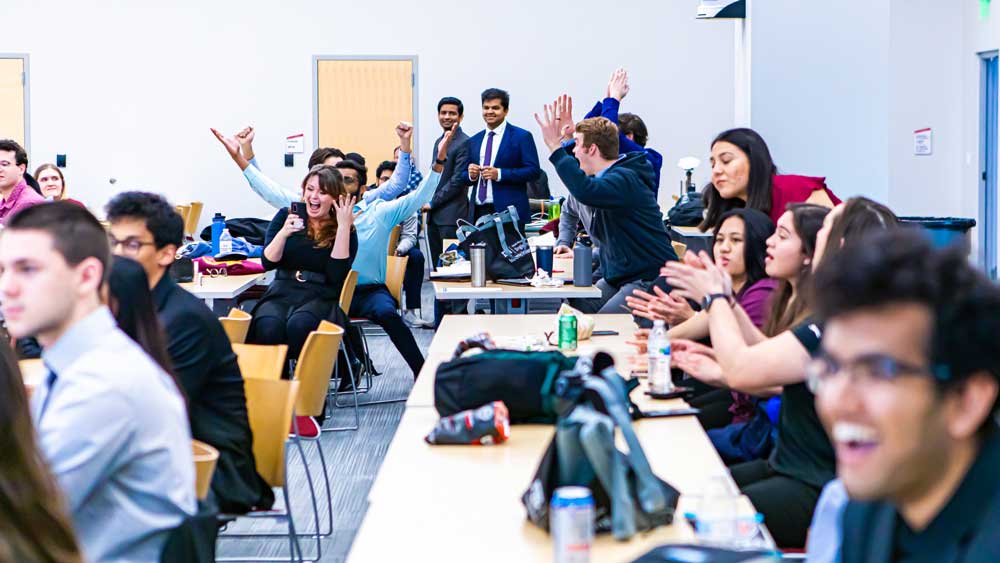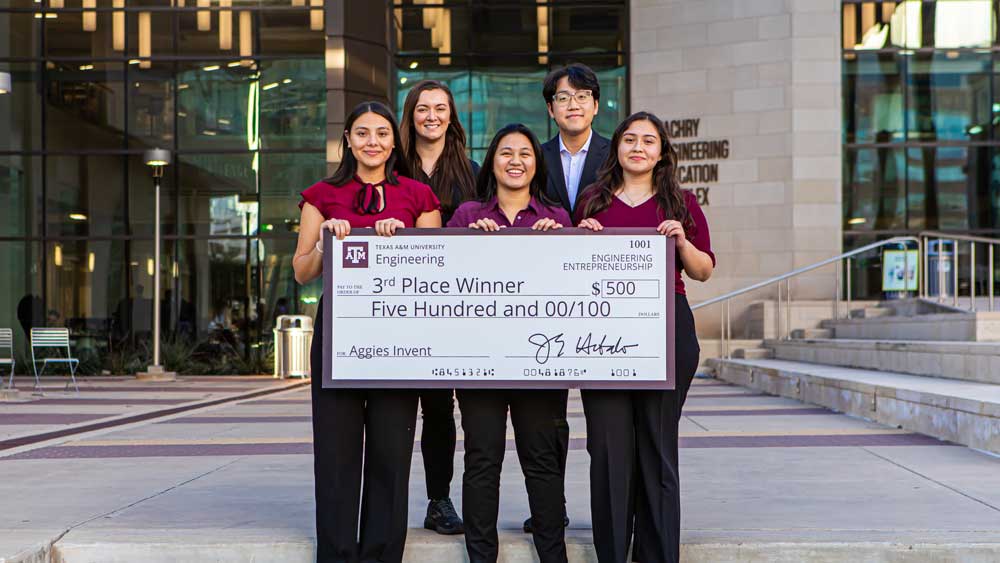
Texas A&M University hosted its fifth annual Invent for the Planet (IFTP) from Feb. 10-12. Over the course of the first phase of the competition, 24 universities from across the world participated simultaneously by hosting their own local IFTP and came together to present innovative solutions to some of the world's most pressing problems.
During part one, each university chose three top teams to win first-, second- and third-place prizes. All first-place teams will submit their videos to a panel of judges who will select the final top five teams in March. Those teams will travel to College Station, Texas, for a final pitch competition held on April 20. Global winners will be awarded $5,000 for first place, $3,000 for second and $2,000 for third.
During the competition, students collaborated internationally through Microsoft Teams. Through this platform, they were able to seek guidance from their peers, industry experts and academia about the need statements they were tackling.
“It was tremendous to see students across the globe work together to solve problems that will affect our entire planet,” said Rodney Boehm ’78, professor of practice with the Engineering Entrepreneurship Program. “My energy level increased throughout the weekend as I saw the students’ excitement build when they realized the potential impact of what they were doing.”
Boehm believes IFTP gives students the ability to think and design outside of their lives to solve some of the most impactful problems facing humanity.
“The sun never sets on innovation because, for 48 hours, these universities are all innovating around the clock,” said Boehm. “It’s one of my favorite events as we see the global impact of our effort.”
The Texas A&M University winners

Natural disasters are unpredictable and often lead to thousands being displaced. Team DisPlace, the first-place winner of the local Texas A&M IFTP competition, developed a modular transportable housing design that can grow amid unpredictable situations in the wake of a natural disaster.
“Our solution was to bridge the gap between emergency shelter and permanent housing,” said Katie Teague, a mechanical engineering student and member of DisPlace. “We were able to create a model that grows with a situation and time. For example, if you only need emergency housing, you will get emergency housing with our model. If it needs to be long-term housing, we are able to easily modify our design to allow for that.”
The team’s motto is, “We are DisPlace, and we are the solution to displacement,” but their solution goes far beyond physical disaster relief. Physical rehabilitation is a common goal for other temporary housing solutions for natural disasters. However, these solutions tend to ignore the need for mental rehabilitation after experiencing a traumatic event, such as a natural disaster, and being in an unusual arrangement, such as temporary housing. The team’s focus was to provide immediate disaster relief that prioritizes mental well-being and rehabilitation.
“This experience was intense, but ultimately it pulled me out of a creative rut that I had felt for a while,” said Teague. “It really inspired me to realize my potential and the potential of every single person on my team.”
Team DisPlace
- Katie Teague, mechanical engineering
- Chirag Agile, aerospace engineering
- Cade Bush, mechanical engineering
- Carson Duffy, computer engineering
- Sebastian Regener, mechanical engineering
- Andrew Fenner, general engineering

Oceans are filled with biodiversity and life, though they are also home to large amounts of pollution and waste. Much of this is from the 6-8 million tons of shellfish waste each year, which harms the environment and ocean life.
Team Trident placed second for its creation of a three-pronged trident process. The prototype grinds shellfish waste and transforms it into valuable products such as chitin (a type of polysaccharide, or sugar molecule, that is made by some plants and animals), calcium carbonate (which can be reintroduced to redevelop the ocean and heal coral reefs) and fertilizer through chemical extraction to reintroduce these products into the environment and economy. Team Trident notes that while creating profit for fisheries, they are also supporting the environment.
“Our need statement dealt with seafood waste, a lot of which is thrown out into the ocean and landfills. We wanted to make it economically viable and environmentally friendly,” said Cristian Finley, a freshman engineering student. “Along with economic benefits, the calcium carbonate can be put back into coral reefs to help them regrow, which is a huge environmental concern right now with the loss of coral reefs. We wanted to promote that growth and help the ecosystem.”
Team Trident
- Cristian Finley, chemical engineering
- Ittiyanam Tomichan, engineering freshman
- Janak Abraham, biomedical science
- Prineet Anand, bioenvironmental sciences
- Rodolfo Rivera, industrial and systems engineering

Wastewater treatments in industrial facilities contribute to carbon emissions in the atmosphere and produce large amounts of non-renewable waste. Carbon dioxide enters the earth’s atmosphere and dissolves into the ocean, resulting in polluted water.
Aquasolved developed a water filter to remove carbon dioxide from wastewater made by industrial facilities. In the filter is algae, which can absorb the carbon dioxide and other contaminants in these facilities' water before it is dumped into larger bodies of water.
“These problems we were working on are big enough to apply to everyone in the world,” said Mya Tinsay, a freshman engineering student and member of Aquasolved. “Anyone can make a solution, and each one can be different while achieving the same goal.”
Team Aquasolved
- Whitney Mantooth, multidisciplinary engineering
- Kedim Martinez, industrial and systems engineering
- Alejandra Madrigales, engineering freshman
- David Min, engineering freshman
- Mya Tinsay, engineering freshman
For a list of participating universities or for more information, visit the IFTP webpage.